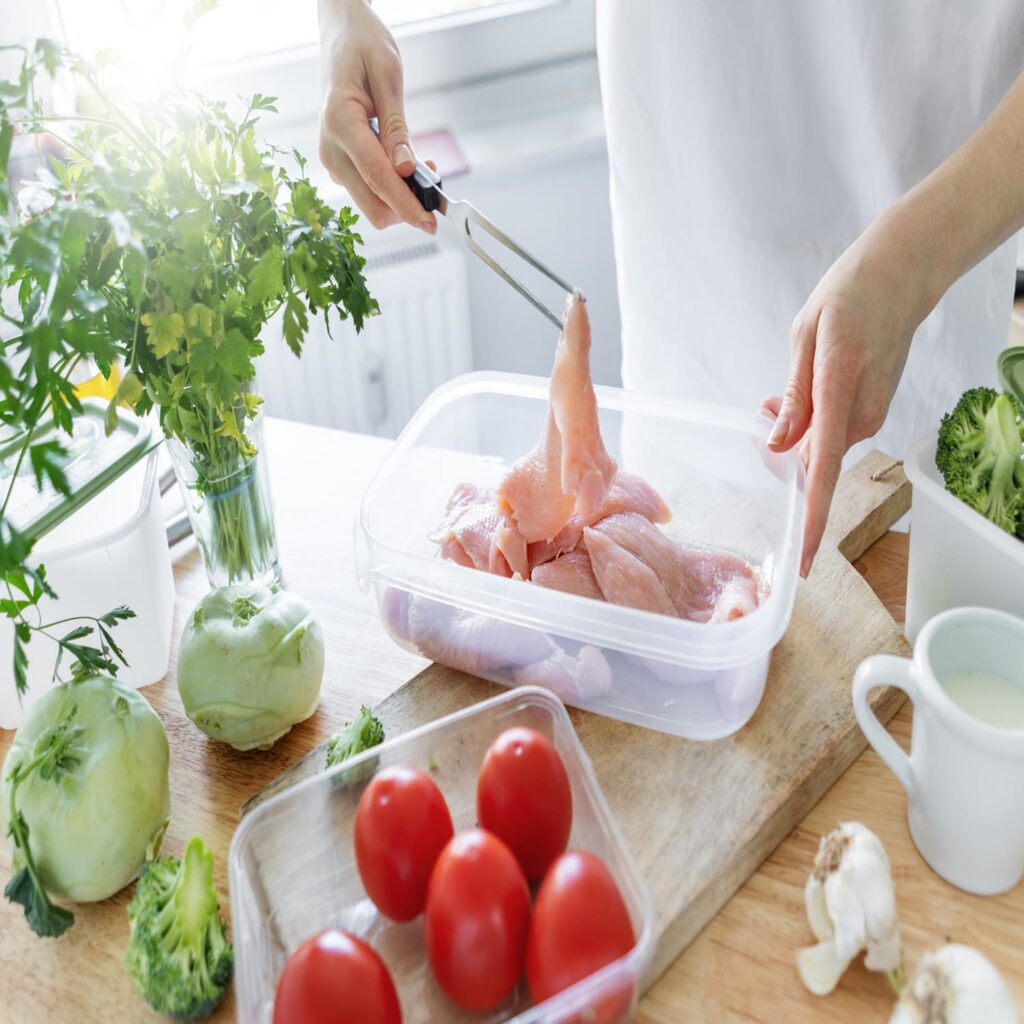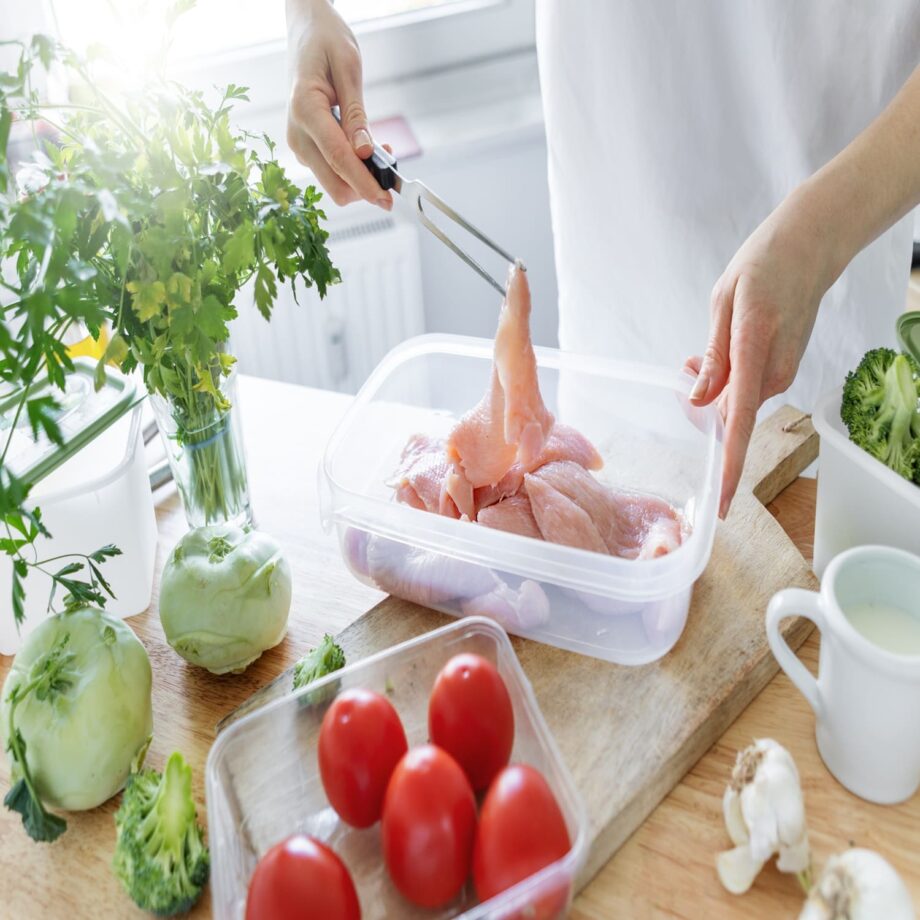Discover essential chicken storage tips to keep your raw chicken safe, prevent food poisoning, and maintain freshness. Learn how to store, freeze, and thaw chicken properly for healthy meals every time.
Proper storage is key to keeping cooked chicken safe and flavorful. Our expert chicken storage tips help you prevent spoilage and maintain freshness, whether you’re refrigerating or freezing your meals. By following these chicken storage tips, you can enjoy juicy, tender chicken in salads, sandwiches, and other dishes while reducing food waste and ensuring every meal is safe to eat.
Best chicken storage tips
Properly storing cooked chicken is essential for maintaining freshness and preventing foodborne illness. Our chicken storage tips guide explains how to keep your chicken safe in the fridge or freezer while preserving its flavor and texture. By following these chicken storage tips, you can enjoy leftovers for several days without worrying about spoilage, ensuring every meal is both safe and delicious.

1. Keeping Chicken Too Long at Room Temperature
Leaving raw chicken out at room temperature for long periods of time is one of the most frequent and hazardous kitchen errors. Because raw chicken is so perishable, it creates the perfect environment for bacteria like Salmonella and Campylobacter to grow. Under ideal circumstances, the number of these bacteria can double every 20 minutes, making it very dangerous to leave chicken out of the refrigerator.
When chicken is left in the so-called “danger zone,” which is between 40°F and 140°F (4°C and 60°C), the issue is especially serious. Bacteria can grow quickly at these temperatures, raising the risk of foodborne illnesses. The risk can be greatly increased even if chicken is left out for just one or two hours.
Solution: Always keep raw chicken in the refrigerator as soon as possible after purchase to stop the growth of bacteria. To keep the chicken safe for one to two days, keep the temperature in your refrigerator at ≤ 40°F (4°C). To safely prolong its shelf life, put the chicken in the freezer if you won’t be cooking it within that time frame.
2. Poor Packaging or Wrapping
Inadequate packaging or wrapping is another frequent error made when handling raw chicken. Bacteria can readily spread from opened chicken packages that are left loosely wrapped in paper, plastic wrap, or the original store packaging. This can happen to other foods in your refrigerator as well as to your hands, utensils, and surfaces. Cross-contamination, one of the primary causes of foodborne illnesses like Salmonella or Campylobacter infections, is increased as a result.
Furthermore, chicken that is not properly wrapped may dry out in the refrigerator or take on the smells of other foods, which will degrade the quality and flavor of the dish. A minor juice leak from the packaging could contaminate nearby vegetables or ready-to-eat foods, posing a major health risk.
Solution: Always move raw chicken to an airtight container or a high-quality freezer bag to ensure its safety and freshness. To catch any drips and keep them from contaminating other items in the refrigerator, make sure to place the chicken on a plate or tray. Maintaining moisture through proper sealing also keeps your chicken juicy and flavorful while cooking.
3. Storing Chicken on the Wrong Shelf
Storing raw chicken anywhere in the refrigerator without thinking about its location is a common mistake made by many home cooks. There can be significant cross-contamination if raw chicken is positioned above foods that are ready to eat, like fruits, vegetables, or cooked meals. There is a significant chance of contracting a foodborne illness if the chicken package leaks or drips, as this could spread dangerous bacteria like Salmonella or Campylobacter to uncooked food.
A single drop of raw chicken juice on a cooked dish or salad can cause nausea. Because bacteria are invisible and microscopic, even though the chicken may appear clean, many people underestimate this risk.
Solution: Always keep raw chicken in an airtight bag or sealed container on the lowest shelf of your refrigerator. This stops any juices from spilling and contaminating other foods. Put a tray or plate underneath the container to catch any leaks for added security.
4. Not Freezing Chicken Properly
One of the best methods for preserving the quality and extending the shelf life of chicken is to freeze it. But a lot of people make mistakes that can jeopardize taste and safety. Freezer burn, which dries out the meat and alters its texture and flavor, can result from loosely wrapping chicken or from postponing the freezing process. Even worse, bacteria may continue to grow before the chicken reaches a safe frozen state if it isn’t frozen fast enough.
Moisture escaping from the chicken and forming ice crystals on the surface causes freezer burn. It can make the chicken tough, dry, and less fun to cook, but it doesn’t make it unsafe. Additionally, improper wrapping raises the possibility of contamination from other frozen foods.
Solution: To preserve the quality of chicken while safely freezing it:
To stop moisture loss, tightly wrap it in vacuum-sealed bags, aluminum foil, or plastic wrap.
For quick freezing, put the chicken in the freezer’s coldest section.
To keep track of storage time, mark the date of freezing on each package.
Guidelines for Storage:
Whole chicken: up to nine months
Parts of chicken (wings, thighs, and breasts): 3–6 months
5. Ignoring the Safety of Thawing
One of the main causes of foodborne illness is improper thawing of chicken. In an attempt to expedite the process, many people make the mistake of leaving frozen chicken on the counter or submerging it in warm water. Regretfully, even though the center of the chicken stays frozen, these techniques let the outer layers reach the danger zone (40°F to 140°F / 4°C to 60°C), where Salmonella and Campylobacter can grow quickly.
In addition to raising the possibility of food poisoning, improper thawing can degrade the chicken’s texture and quality by causing it to cook unevenly.
Solution: Use one of the suggested techniques listed below to safely thaw chicken:
Thaw the chicken in the refrigerator by placing it in a tightly sealed container on the lowest shelf. For every five pounds of chicken, allow approximately twenty-four hours. By using this technique, the chicken can be thawed gradually and evenly while maintaining a safe temperature.
Thaw the chicken in cold water by immersing it in a plastic bag that has been sealed. To keep the water cold, change it every half an hour.
Use the microwave to thaw the chicken only if you intend to cook it right away. If not cooked immediately, microwave thawing can partially cook the chicken, resulting in warm spots where bacteria can grow.
To make meal prep safer and easier after cooking, many home chefs use the Chicken Shredder Gadget, which allows you to shred chicken quickly without the mess or risk of contamination.
Properly storing raw chicken is the first step to tasty dishes. Once stored safely, see how to make juicy shredded chicken for a perfect meal every time.
After cooking, shredding chicken properly ensures tenderness. Discover expert tips for shredding cooked chicken to make the process quick and efficient.
Keeping cooked chicken fresh and safe requires proper techniques in the kitchen. These chicken storage tips show you how to store chicken in the fridge or freezer to maintain flavor and prevent bacterial growth. By applying these simple chicken storage tips, you can enjoy healthy meals, save time on meal prep, and ensure your chicken remains safe and delicious for several days
For added convenience and organization in your kitchen, consider using the Charcuterie Stackable Organizer on Amazon to store snacks or meal ingredients safely while keeping your kitchen organized.

